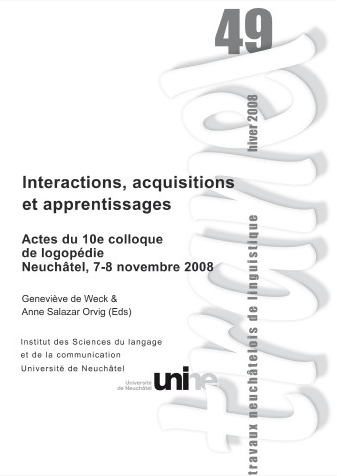Diversité des étayages des mères d'enfants tout-venant et dysphasiques dans deux situations d'interaction
DOI :
https://doi.org/10.26034/tranel.2008.2760Résumé
The aim of the present article was to investigate the characteristics of maternal scaffolding strategies to children with SLI as compared to normally developing children matched on age and to younger control children. Mother-child dyads were observed in two situations varying in terms of type of discursive activity: a guessing game and the reading of a picture book without text. Two types of scaffolding strategies were distinguished: linguistic (focusing on language support) and cognitive (focusing on task execution support). Results indicated qualitative and quantitative differences in the use of scaffolding strategies by mothers of SLI children. Indeed, they produced significantly more linguistic scaffolding strategies than mothers of normally developing and younger control children in both situations. As far as cognitive scaffolding was concerned, similarities and differences were observed between mothers of SLI children and mothers of normally developing and younger control children.Téléchargements
Publié-e
01-12-2008
Comment citer
Ingold, J., Gendre, S., Rezzonico, S., Corlateanu, C., & Da Silva, C. (2008). Diversité des étayages des mères d’enfants tout-venant et dysphasiques dans deux situations d’interaction. Travaux neuchâtelois De Linguistique, (49), 69–82. https://doi.org/10.26034/tranel.2008.2760
Numéro
Rubrique
Article thématique


